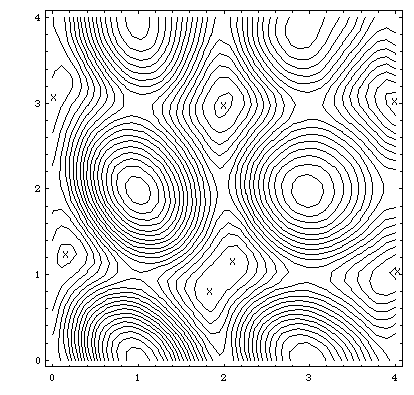Focus on: Optimization Overview
The difference between the coating's performance and the desired performance is computed in the merit function

In general, there are many coating designs that minimize the merit function. For example, the contour plot below shows the merit function for a two-layer coating design. The X's mark where the merit function has minimum values.

The designer may use "constraints" to limit the designs found by optimization. That is, the designer may place limits on the range of values that a thickness or index may have. For instance, the designer may want to use constraints to prevent layers from becoming too thin or too thick.
Optimizing symmetric designs. TFCalc has the capability of maintaining a symmetry in a design while it is being optimized. This is done using TFCalc's "group" optimization feature. Each layer is assigned to a group; during group optimization, all of the layers in the same group are shifted together. That is, layers in the same group are multipled by a "group factor" and it is the various group factors that are optimized.